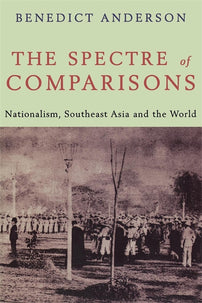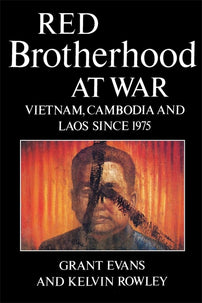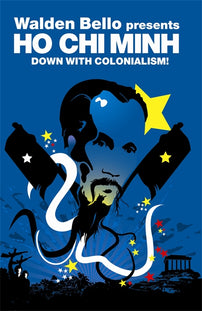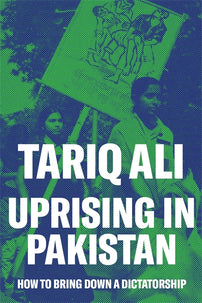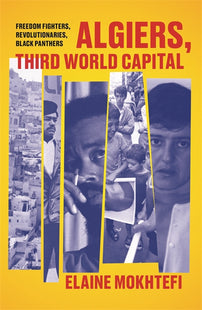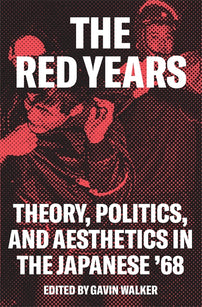1968 and the “Thai Seventies"
Thai society was profoundly influenced by the wave of struggles throughout the world around 1968 — but there was a slight time-lag, with radicalisation reaching its peak in the 1970s.

Thai society was profoundly influenced by the wave of struggles throughout the world around 1968. But there was a slight time-lag as the radicalisation reached its first peak in 1973, five years later. The link between 1968 and the “Thai Seventies” occurred in two ways.
Firstly, the wave of student revolts and the activism among young people in Western Europe and the United States were an inspiration. Libertarian Left-wing ideas from the Western movement entered Thai society by way of news reports, articles, books, music, and the return of Thai students from the West, especially art students in the first instance.
Secondly, the victory of Communist Parties in Indochina had a massive impact in igniting struggles for a new society in Thailand. These Asian Communist victories were also directly linked to the “Sixties” movement in the West in a dialectical manner. The radicals in the West were inspired by the struggles against imperialism in Southeast Asia and other areas of the globe, and the anti-Vietnam War movement helped to destroy the ability of the US to continue with the war.
What did the Thai “Seventies” look like? The first picture in one’s mind should be half a million people, mainly young school and university students, but also ordinary working people, protesting around the Democracy Monument on 14th October 1973. This resulted in the overthrow of the military dictatorship. It was the first mass popular uprising in modern Thai history.
The military domination of Thai politics gradually grew after the 1932 revolution against the absolute monarchy, but was consolidated with the Sarit military coup in 1957. The economic development during the years of military dictatorship in the 50s and 60s took place in the context of a world economic boom and a localised economic boom created by the Korean and Vietnam wars. This economic growth had a profound impact on the nature of Thai society. Naturally the size of the working class increased as factories and businesses were developed. However, under the dictatorship trade union rights were suppressed and wages and conditions of employment were tightly controlled. Yet, illegal strikes occurred throughout the period of and increased rapidly in the early 1970’s due to general economic discontent. The first 9 months of 1973, before the 14th October uprising, saw a total of 40 strikes, and a one month strike at the Thai Steel Company which resulted in victory due to a high level of solidarity from other workers.
Economic development also resulted in a massive expansion of student numbers and an increased intake of students from working class backgrounds. The building of the Ramkamhaeng Open University in 1969 was a significant factor here. Student numbers in higher education increased from 15,000 in 1961 to 50,000 by 1972. The new generation of students in the early 1970s were influenced by the revolts and revolutions which occurred throughout the world in that period, May 1968 in Paris being a prime example. Students started to attend development camps in the countryside in order to learn about the problems of rural poverty. By 1971 3,500 students had attended a total of 64 camps. In 1972 a movement to boycott Japanese goods was organised as part of the struggle against foreign domination of the economy. Students also agitated against increases in Bangkok bus fares.
In June 1973 the rector of Ramkamhaeng University was forced to resign after attempting to expel a student for writing a pamphlet criticising the military dictatorship. Four months later, the arrest of 11 academics and students for handing out leaflets demanding a democratic constitution, resulted in hundreds of thousands of students and workers taking to the streets of Bangkok. As troops with tanks fired on unarmed demonstrators, the people of Bangkok began to fight back. Bus passengers spontaneously alighted from their vehicles to join the demonstrators. Government buildings were set on fire. The “Yellow Tigers," a militant group of students, sent a jet of high-octane gasoline from a captured fire engine into the police station at Parn-Fa bridge, setting it on fire. Earlier they had been fired upon by the police.
The successful 14th October 1973 mass uprising against the military dictatorship was a watershed event. It was not planned and those that took part had only vague notions about what kind of democracy and society they wanted. It was not just a student uprising to demand a democratic constitution. It involved thousands of ordinary working class people and occurred on the crest of a rising wave of workers’ strikes. It also received much interest among students in Greece who were trying to overthrow their own military junta.
Success in overthrowing the military dictatorship bred increased confidence. Workers, peasants, and students began to fight for more than just parliamentary democracy. In the two months following the uprising, the new appointed civilian government faced a total of 300 workers’ strikes. A central trade union federation was formed. New radical student bodies sprang up. On the 1st May 1975 a quarter of a million workers rallied in Bangkok and a year later half a million workers took part in a general strike against price increases. In the countryside small farmers began to build organisations and they came to Bangkok to make their voices heard. Workers and peasants wanted social justice and an end to long-held privileges. A Triple Alliance between students, workers and small farmers was created. Some activists wanted an end to exploitation and capitalism itself. The influence of the illegal Communist Party of Thailand (CPT) increased rapidly, especially among activists in urban areas.
The first democratic elections since the uprising were held in January 1975. Parliament had a Left colouring and government policies reflected a need to deal with pressing social issues. Left-wing parties, such as the New Force Party, the Socialist Party of Thailand, and the Socialist Front Party gained 37 seats (out of a total of 269) but did not join any coalition governments. The first coalition government, made up of the Democrats and the Social Agriculture Party, announced that it would follow “Social Democratic” policies. However, the government lost a vote of no confidence in parliament in March 1975 and was replaced by a new coalition government headed by the Social Action Party. The new government introduced a number of pro-poor policies, including job creation schemes. This government presided over a period of increasing social tensions. Strikes, demonstrations, and political assassinations occurred on a regular basis. Eventually parliament was dissolved in January 1976 and elections held in April. The April elections resulted in a swing to the right.
Student activism in society
One important area of activity for students was the struggle against US imperialism and for Thai “independence”. The military dictatorship had been a close ally of the United States during the Cold War, sending token numbers of Thai troops to support the US in both Korea and Vietnam. In 1973 there were 12 US military bases in the country, with 550 war planes and thousands of troops stationed on Thai soil. The presence of such a large number of US forces, plus what was seen as the economic dominance of US companies in the local economy, seemed to confirm the Maoist analysis by CPT that Thailand was a “semi-colony” of the USA. After 1973 there was therefore a growing campaign to kick out US bases. This campaign against US bases, which later on received a boost from the defeat of the USA in Vietnam and the resulting geopolitical consequences, lead to Prime Minister Kukrit’s demand in March 1975 that the US withdraw. This was backed up by a massive anti-US base demonstration on 21st March 1976. The US finally withdrew its troops from Thailand shortly after.
Another important area where the student movement was active was in human rights and democracy. Students campaigned to push for more democratic amendments to the 1974 constitution and they led struggles against state repression. It is estimated that between 1971 and 1973 government forces had systematically arrested and interrogated villagers, resulting in over 3000 deaths.
In addition to exposing state repression, student volunteers were also involved in the rather patronising state-sponsored campaign to “spread democracy to the rural people” in the summer vacation of 1974. However, this campaign did provide an opportunity for thousands of urban students to observe social problems in the villages at first hand, thus strengthening future cooperation between students and small farmers in the Triple Alliance. This helped to broaden the activities of students into areas of social justice.
On the cultural front, students campaigned for art and literature to be more in tune with the lives of ordinary people. Often this was influenced by narrow and mechanical ideas of Stalinist “socialist realism," which could be found in the writings of the communist intellectual Jit Pumisak.
Left-wing student parties won control of student bodies in various universities. Although they were more or less autonomous, they shared the same general ideology which was heavily influenced by the Maoism of the CPT. This can be seen by their concentration on countryside activity, although many groups also worked among urban workers. The armed struggle by the CPT in the countryside was seen as the key to building a better society.
It would be quite wrong to assume that student leaders, even those who were party members, were receiving direct orders from the CPT Central Committee. For a start, the party leaders were far away in the remote countryside and also the party never saw the urban struggle as being central to the overall Maoist revolutionary strategy. For this reason, it can be assumed that in the period between 1973 and 1976, student activists exhibited a high degree of self-leadership and organisation, while accepting the overall political analysis of the party.
Workers
Networks of rank and file union militants, gathered together in “Area Groups," were built by communist-influenced activists. These networks brought together trade unionists from a fragmented movement made up of enterprise unions. The CPT also influenced top union leaders.
The CPT grew out of organised workers of Chinese origin, who made up the bulk of the early Thai working class. Originally the party organised urban workers in the 1940s and 1950s, but it took a Maoist turn away from the working class and towards the peasantry, in the 1960s. This Maoist turn to the countryside became a serious problem for workers and the Left in general.
The 6 October 1976 bloodbath
In the early hours of 6 October 1976, paramilitary police destroyed a peaceful gathering of students and working people on the campus of Thammasat University under a hail of relentless automatic fire. At the same time a large gang of ultra-right-wing “informal forces," known as the Village Scouts, Krating-Daeng, and Nawapon, indulged in an orgy of violence and brutality towards anyone near the front entrance of the university. Students and their supporters were dragged out of the university and hung from the trees around Sanam Luang; others were burnt alive in front of the Ministry of “Justice” while the mob danced round the flames. Women and men, dead or alive, were subjected to the utmost degrading and violent behaviour.
The actions of the police and right-wing mobs on 6 October were the culmination of attempts by the ruling class to stop the further development of a socialist movement in Thailand. The events at Thammasat University were followed by a military coup which brought to power one of the most right-wing governments Thailand has ever known. In the days that followed, offices and houses of organisations and individuals were raided. Trade unionists were arrested and trade union rights were curtailed, centre-left and left-wing newspapers were closed and their offices ransacked, political parties, student unions and farmer organisations were banned. The new military regime released a list of 204 banned books. University libraries were searched and books were confiscated and publicly burnt.
The Thai ruling class’ desire to destroy the further development of the socialist movement, especially in urban areas, can be understood by looking at the political climate at the time. Three years earlier a mass popular movement had overthrown the military, which had been in power since 1957. However, the establishment of parliamentary democracy on its own did not begin to solve deep-rooted social problems. Therefore the protests, strikes and factory occupations intensified. By 1975 Communist governments were in power in neighbouring Laos, Vietnam, and Cambodia, and in Thailand rural insurgency by the Communist Party of Thailand was on the increase.
The immediate impact of the bloodbath at Thammasat was that thousands of students went to the countryside to join the armed struggle against the Thai State led by the CPT But the problem with the CPT’s Maoist strategy was that it more or less abandoned the city and the working class to government repression.
Three years after 1976, splits and arguments between the student activists and the conservative CPT leaders resulted in an exodus from the CPT camps. It was the failure of the CPT to develop a credible strategy for the Thai socialist revolution and a failure to relate to the new generation of young activists who joined the struggle in the 1970s. The emphasis on rural armed struggle in Thailand did not fit reality. Since 1932 all significant social changes have taken place in the cities. The struggle by small farmers was and still is important in terms of defending social justice for the poor, but it is fundamentally a defensive and conservative struggle to survive, not a struggle for a future society. The authoritarian nature of Stalinist and Maoist parties meant that the CPT leadership were afraid to let students take leadership roles. The students were certainly capable of self-leadership. After all, they were key in overthrowing the military dictatorship in 1973. The main experience of student activists in the jungle with the CPT was a stifling of all original ideas and a lack of any freedom to debate. Finally, the CPT’s Maoism backfired when the Chinese government turned its back on the party in order to build a relationship with the Thai ruling class in the new geo-political situation after the Vietnam War.
By 1988 the student activists had all returned to the city as the CPT collapsed. For a decade or so Thailand returned to parliamentary democracy, but with one special condition: it was a parliamentary democracy without the Left or any political parties representing workers or small farmers. The lack of a mass left-wing party of workers is still the case today, although we are once again under a repressive military junta.
Further Reading
K. A. Bowie (1997) Rituals of National Loyalty (Columbia University Press, USA).
G.J. Ungpakorn (2010) Thailand’s Crisis and the Struggle for Democracy (WD Press, UK). https://bit.ly/2bbP5ym
Giles Ji Ungpakorn’s blog on Thailand https://uglytruththailand.wordpress.com/
Giles Ji Ungpakorn is a retired Thai academic living in exile in the U.K. The former Associate Professor of politics at Chulalongkorn University was charged with lèse majesté in late 2008 because he wrote a book criticising the 2006 military coup.
[book-strip index="1" style="display"]
